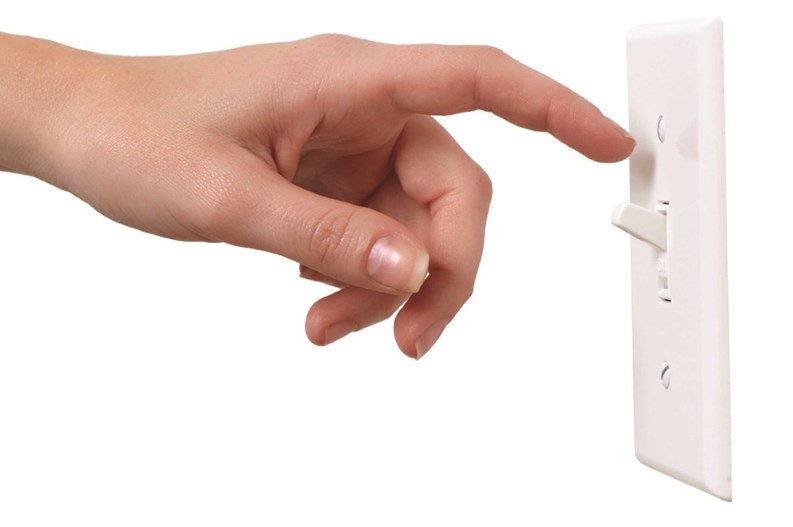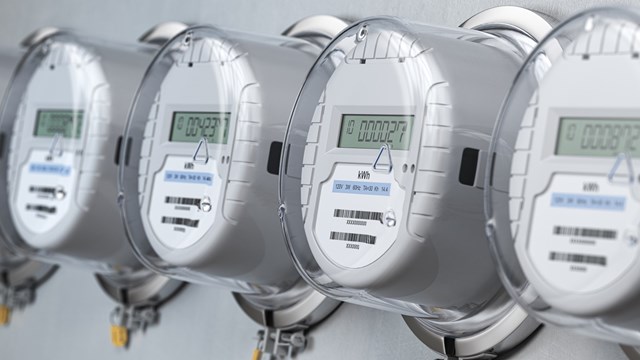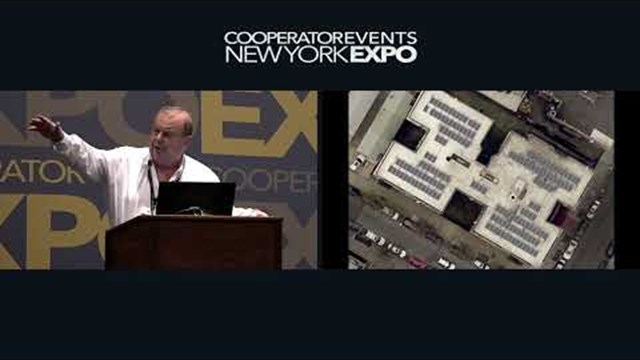Saving energy does a lot more than just reduce a building’s carbon footprint and toxic emissions—going green can save a building some green too. The steps a co-op or condo building can take to reduce energy consumption and save money range from the very simple to the very complex. We’ve asked various energy experts to offer their top 10 tips for saving energy and money. Remember, the list is just a start—there are many ways in which you can go green, but following some of these ideas is a great place to start.
Check Your Current Systems
Without a doubt, all of the experts agreed that keeping your current systems maintained was the number one way to save both energy and money.
“Boards cannot afford to wait until something is broken or leaking to perform necessary repairs,” says Eric Michaels, director of Green Building Technologies at Platinum Energy Group in Lindenhurst. “Failure of any kind—catastrophic or acute—can be avoided 95 percent of the time with a solid and well-executed maintenance program. Failure to adopt a regimented schedule will absolutely cost a building thousands of dollars in repair bills that could have been and should have been avoided. Take care of what you have is rule number one.”
Allan Samuels, a partner at Energy Squared, engineering consultants based in North Brunswick, New Jersey, suggests that there should be someone responsible for keeping the systems that consume energy—chillers, water towers, condensing units, lighting, fans, air conditioning units, heating, boilers, any mechanical or electrical systems—operating and functional, but unfortunately not everyone wants this responsibility.
As a result, Samuels compares the results of this lack of responsibility to a knotted garden hose. “If there is water trickling out, you can either turn up the water or fix the problem and untangle the hose,” he says. “Most people want the quick fix and just turn the water up, but it’s a waste of energy/resources. Same with air conditioning— clogged filters take more energy and the fan has to push harder. Fix the problem, unclog the filters and the system will work better.”
“Have maintenance check set points and send documentation back to the board,” says Frank Lauricella, director of business development at The Daylight Savings Company in Goshen. “Consider having unit TCVs (thermostatic control valves) installed or checked, if existing and have a regular steam trap maintenance program, if using a steam system.”
Benchmarking and Energy Audits
With anything in life, it’s hard to know where you’re going when you don’t know where you’ve been and a building is no different. An energy audit will provide an overview of how much energy your building is saving or losing. The experts say that, as a result, you’ll see what changes you may need to make.
An energy audit can be as simple as examining the building’s monthly utility bills. “Without an energy audit, the managers find out that after a month or two the bills have gone up significantly, so they start to look at the problem,” says Samuels. “In the meantime, by the time they do that, they’ve lost a quarter of a year paying an excessive energy bill. Hiring a company to do an audit can point out problems. For example, if you’re using gas to heat the building, the bill should go down significantly in the summer. You have to look for things like that to save energy and money.”
Lauricella suggests that a qualified firm complete an energy audit and a retro-commissioning project. Local Law 84 requires yearly benchmarking of a building’s energy and water usage, and Local Law 87 requires buildings to undertake audits that lead to energy efficiency retrofits, which generally result in major cost and energy savings. Local Law 87 mandates that buildings 50,000 gross square feet or larger undergo periodic energy audit and retro-commissioning measures, as part of the administration’s Greener, Greater Buildings Plan (GGBP). Following an ASHRAE Level II energy audit, buildings are required to file an Energy Efficiency Report (EER) with the Department of Buildings. The reports must be filed once every ten years, and the first reports are due in 2013 on a staggered schedule.
According to PlaNYC and the Mayor’s Office Report on Long-Term Planning and Sustainability, Manhattan has the highest compliance rate for Local Law 84 at 83 percent and Staten Island the lowest at 39 percent. Compliance in Brooklyn was 69 percent, Queens, 72 percent, and The Bronx, 71 percent. Building owners that missed filing deadlines are subject to repeated fines and violations.
“As with anything new and innovative, there is always some confusion the first time around. However, now that the results are in, it's clear that outreach efforts should continue to help property owners become more aware of the compliance requirements of these new local laws in order to avoid future fines and violations,” says George Crawford, a principal of NYG Green Partners and a green buildings proponent.
Stay in Control
Imagine if a building system goes awry—if no one is around to hear it, does it make a sound? Now it does thanks to automated control systems that send notifications to the email or smart phones. These notifications alert owners and managers when there is a problem with a system, or it has been tampered with.
Michaels’ company uses USE Manager™ 6.1, the information hub of U.S. Energy Group’s Building Energy Management System (BEMS). According to their website, the real-time management feature provides owners and managers with automated, real-time control and alerting via the Internet. If, for example, the HVAC system malfunctions, owners and managers will receive notification and can also adjust the system functions through the Internet. They can also receive alerts and displays of comparative and historical trend analysis that reduce fuel and water usage.
Better Appliances and Accessories
It’s simple—upgrade appliances and other accessories to ones that are more energy efficient and you’ll see a major difference. When you’re choosing new appliances, look for the Energy Star certification and the EnergyGuide Label. The certification means that the appliance has met standards that makes it an energy-efficient unit. They use less energy and water than the older models.
“In addition, negotiate with the operating company to be sure they install Energy Star washers and dryers in laundry rooms,” says Lauricella. “Also, make sure that unit owners have low-flow shower heads and faucet aerators installed—this saves on domestic hot water and water costs as well.”
Learn About Incentives
If you want to install Energy Star appliances and other energy-saving accessories, such as low-flow shower heads, it’s possible to earn money back if you know how.
“The single greatest obstacle to improving a building’s energy efficiency is financial,” says Michaels. “The lack of awareness concerning the vast number of incentives and rebates available to the multifamily building community is an obstacle.”
Michaels urges managers to look for rebates and incentives from every utility company, as well as NYSERDA for everything energy related. “There are caveats of course, yet a little due diligence will ensure that most won't pay sticker price for an energy-related project,” he says. “Also, management companies and boards need to increase their awareness of federal tax incentives for energy-efficient upgrades. Not all will be eligible, yet it's another stone that needs to be turned.
Consider Cogeneration
No, cogeneration isn’t getting different generations of families to live together and share expenses. Instead, Michaels explains, you should evaluate your facility's thermal and electric load for combined heat & power (CHP) viability, also known as cogeneration.
“CHP,” says Dale Desmarais, sales manager for Aegis Energy Services, based in Holyoke, Massachusetts, “is the efficient simultaneous production of electricity and hot water using natural gas to reduce your energy costs.”
This does not replace your boiler system but instead it works in conjunction with your existing boilers, and in most cases extends their life, he says. Average savings, notes Desmarais, can range from $50,000 to $300,000 per system and typical paybacks range from 3.5 – 5.5 years. Some of the benefits of CHP are: lower energy costs, excellent payback on investment and a highly efficient use of fuel and reduced carbon emissions. “This is truly one of the best defenses against rising energy costs,” says Desmarais.
Aegis Energy Services allows clients to take advantage of energy cost savings from an Aegis cogeneration system without requiring capital investment. According to Desmarais, Aegis Energy designs, installs, owns, maintains, fuels, and operates a modular cogeneration system at no cost to your facility. Aegis will interface the cogeneration system with your own electrical and mechanical systems to provide both metered electrical and thermal energy (heat). The cogenerated electricity will be provided to your facility at a discount from your prevailing utility electrical rates while heat is provided at standard cost, he says.
Aegis has installed many co-gen systems throughout New England and the New York-New Jersey area. One such installation is at Schwab House, a 646-unit cooperative located on Riverside Drive on the Upper West Side. In 2009, Schwab House partnered with the New York State Energy Research & Development Authority (NYSERDA) and entered a shared savings program with Aegis to install the largest co-gen system in the city. The $1.6 million CHP system installation was made possible with a $402,000 grant award from NYSERDA. The CHP system runs parallel to the Con Ed grid and the recovered waste heat provides space heating and domestic hot water for the building, as well as drives an absorption chiller system that is producing more than 20 tons of cooling for the lobby, hallway and common areas.
Weather-strip
Now that some of the bigger items are out of the way, experts suggest that you do sweat the small stuff. There are several popular low-budget upgrades that your building can do too to help save money and energy, including weather-stripping. Weather-stripping the doors means stopping the air filtration, which causes lost hot and cold air to escape. A good caulk will accomplish a lot at the fraction of the cost. “Weather-strip wherever possible in the doorways, basement doors, owners windows, air conditioning sleeves, etc.,” says Lauricella.
Flip the Switch – Off.
One of the easiest ways to cut back on how much electricity the building uses is to change how it’s lit. Inefficient lighting can consume up to 15 percent of a building’s energy needs or more. Energy-efficient lighting can reduce consumption by 50 percent or more. “Be sure that all common area lighting, including basements, have T8s or compact fluorescents (CFLs) installed and, where possible, have occupancy sensors,” says Lauricella.
CFLs emit as much light as regular incandescent bulbs but can last from 8 to 10 times longer and use anywhere from 50 to 75 percent less electricity. Replace all of the common area lighting with more energy-efficient light bulbs and the savings can be huge. According to Energy Star, replacing one 60 watt incandescent bulb with a 13-watt CFL will save $56 in energy costs over the CFL’s lifetime (at $0.12/kWh). In addition, CFLs reduce future costs of purchasing new lamps—and the labor costs associated with changing light bulbs—because they last 10 times longer.
Become More Sensitive
Lauricella urges management to install lighting controls including photo sensors, vacancy sensors and timers will help to turn off lights that aren’t needed. These can be installed in fitness centers, restrooms, electric rooms, laundry rooms, trash collection rooms and more.
Contact Professionals and Stay Informed
You can’t do it all, so these experts suggest that you rely on those who can help you. “More capital intensive measures should be first assessed by an independent and qualified firm- there are a lot of technologies and vendors out promoting the next best thing since sliced bread,” says Lauricella.
“Have an energy savings/sustainability person on the board and communicate suggestions to the owners on a regular basis (e.g. flyers, general board meetings, etc),” says Lauricella.
To sum it up, Eric Michaels says the issue of saving money and energy is discussed every day and everyone has a different idea on what is best. “The bottom line is having an informed management company,” he says. “It comes down to due diligence and common sense. I work with the greatest management companies in the city and they are all taking steps to improve their awareness of energy efficient technologies.”
Lisa Iannucci is a freelance writer and a frequent contributor to The Cooperator.










Leave a Comment